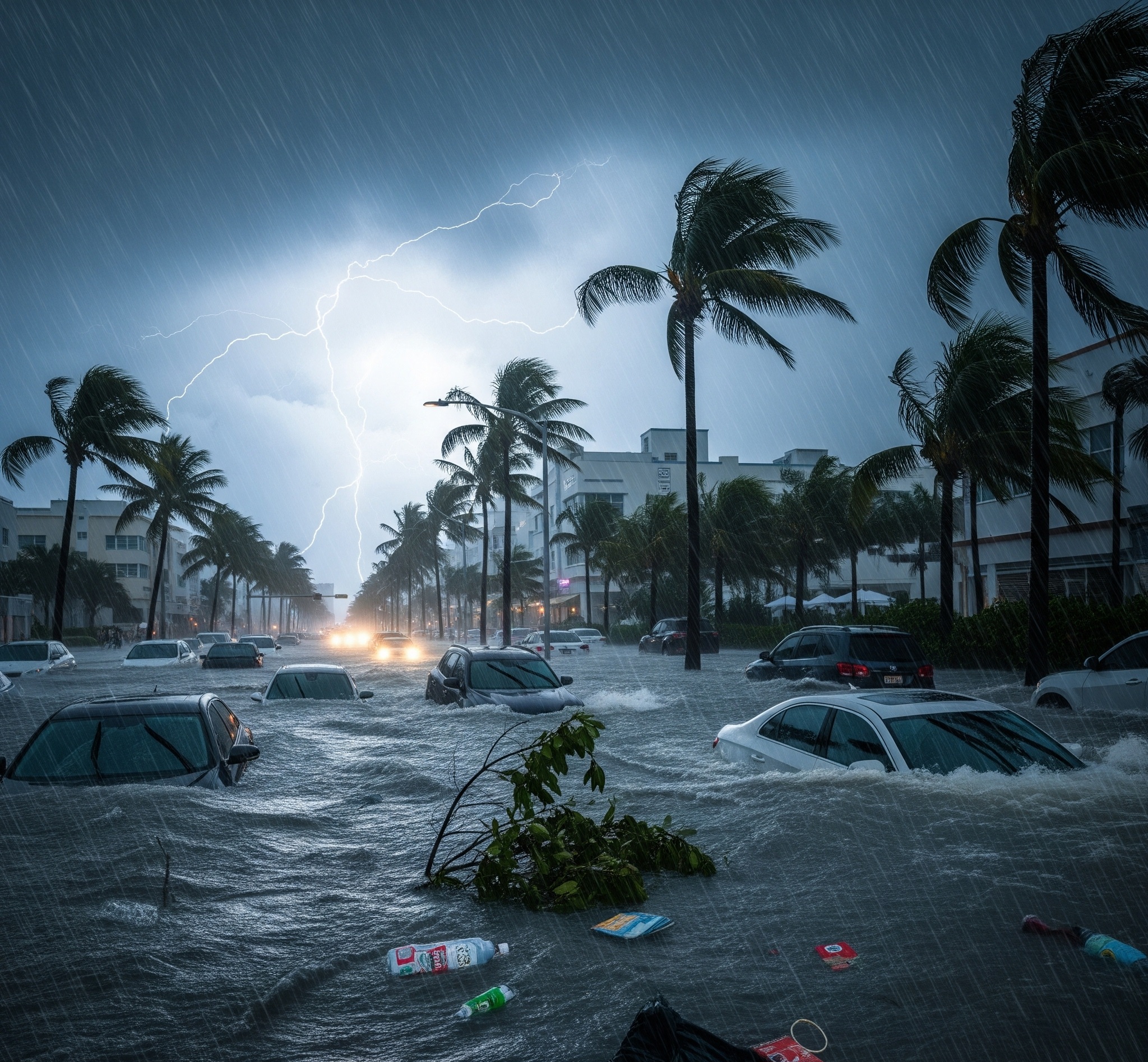
In a landmark decision for climate resilience, North Miami city officials have approved a $30 million infrastructure plan aimed at combating chronic flooding and the threat of rising sea levels. The project, which includes raising streets, upgrading drainage systems, and improving coastal protection, marks one of the most ambitious flood-prevention initiatives ever undertaken in Miami-Dade County.
As South Florida experiences more frequent downpours and high-tide flooding, cities like North Miami face the pressure of adapting rapidly. The city, which lies only a few feet above sea level, has seen streets transformed into temporary rivers during even moderate storms.
Residents in flood-prone neighborhoods like Griffing and Arch Creek have long demanded solutions. The approved plan seeks to tackle these concerns head-on, addressing both short-term fixes and long-term adaptation strategies.
The comprehensive $30 million project includes:
Raising more than 20 flood-prone streets by up to two feet.
Installing high-capacity stormwater pumps in vulnerable zones.
Expanding green infrastructure, including bioswales and rain gardens.
Reinforcing sea walls and updating canals that feed into Biscayne Bay.
Smart drainage systems with real-time monitoring and sensors.
North Miami Mayor Alix Desulme called it a “necessary investment in our future,” adding that residents have waited too long for real action.
While most residents and environmental advocates applauded the initiative, others raised concerns about displacement during construction and potential tax increases. However, the city council assured that funding would come from a mix of municipal bonds, state climate grants, and federal resilience programs.
Local activist Ruth Mendez, who lives near one of the affected zones, said:
“I’ve had to sandbag my door every year. It’s about time the city stepped in.”
Still, small business owners fear construction could disrupt customer traffic. The city has promised clear signage and advance notices to minimize impact.
North Miami’s move comes amid a wider regional effort to boost climate resilience. Miami Beach, Coral Gables, and Miami-Dade County itself have all launched similar projects in recent years, although none as centralized in North Miami’s underserved neighborhoods.
Urban planner and climate expert Dr. Lissette Rosario noted:
“This plan represents a crucial shift. We're seeing equity-driven resilience — meaning working-class neighborhoods are now getting the attention they deserve.”
Sea levels in South Florida have risen more than 8 inches since 1950, and experts predict another 6 to 10 inches by 2040. These changes, combined with heavier rainfall and more powerful storms, pose a major risk to infrastructure, housing, and daily life.
In North Miami alone, flood-related property damage has cost the city nearly $15 million over the past decade, with FEMA payouts continuing to rise. Insurance premiums in some zip codes have jumped more than 30% in two years.
This new investment signals a pivot from reactive to proactive planning.
The flood mitigation project will be rolled out in phases over the next five years:
Phase 1 (2025–2026): Engineering assessments, community input, and pilot drainage systems in high-priority zones.
Phase 2 (2026–2027): Street raising and canal reinforcement near NE 135th Street.
Phase 3 (2027–2029): Expansion to inland neighborhoods, smart pump installations, and final green infrastructure upgrades.
Public meetings and workshops will begin in late August to allow community members to shape the project.
North Miami officials say they studied similar programs in cities like New Orleans, Houston, and Rotterdam, which have built some of the world’s most advanced flood defense systems.
City Manager Theresa Therilus emphasized this learning process:
“We’re not just patching pipes. We’re redesigning the way this city interacts with water — and that requires global best practices.”
This approach also includes “living shoreline” experiments — natural buffers like mangroves and wetlands that protect against storm surge while supporting wildlife.
For many residents, the plan represents hope. Parents worry less about flooded school bus stops. Seniors think about safer streets. Business owners anticipate reduced insurance costs. And kids — well, they might get a new rain garden at their local park.
Amari Grant, a 17-year-old North Miami High student, shared:
“It’s more than pipes and roads. It’s about protecting where we live.”
This perspective is helping to shift the conversation from temporary fixes to long-term planning — and from reacting to crisis to building for the future.
If successful, North Miami’s $30 million investment could serve as a model for other inland cities facing similar climate threats. What’s especially notable is its holistic design — combining infrastructure, nature, and community education.
For residents of North Miami, the road ahead may be under construction — but it leads to higher ground, literally and metaphorically.